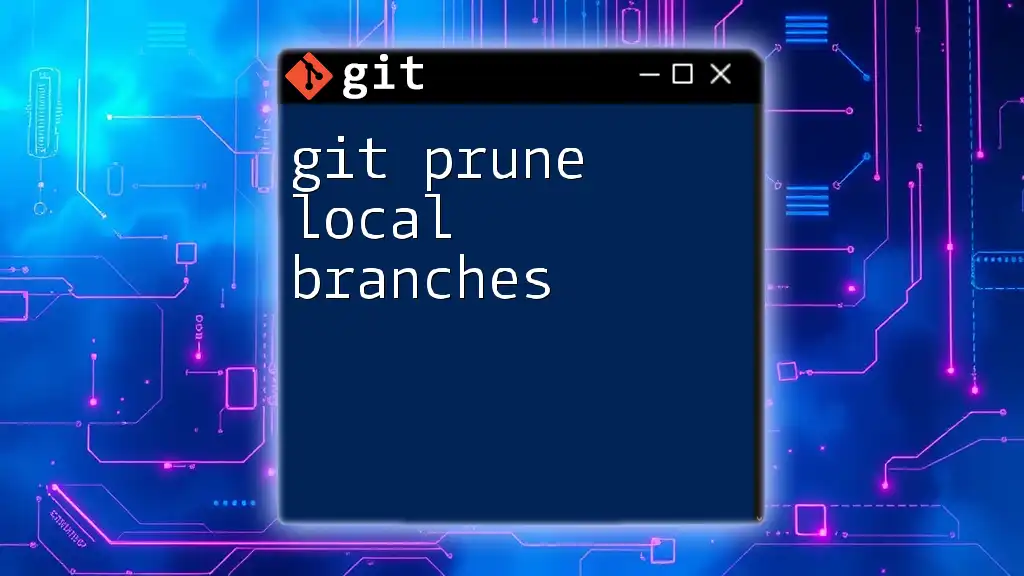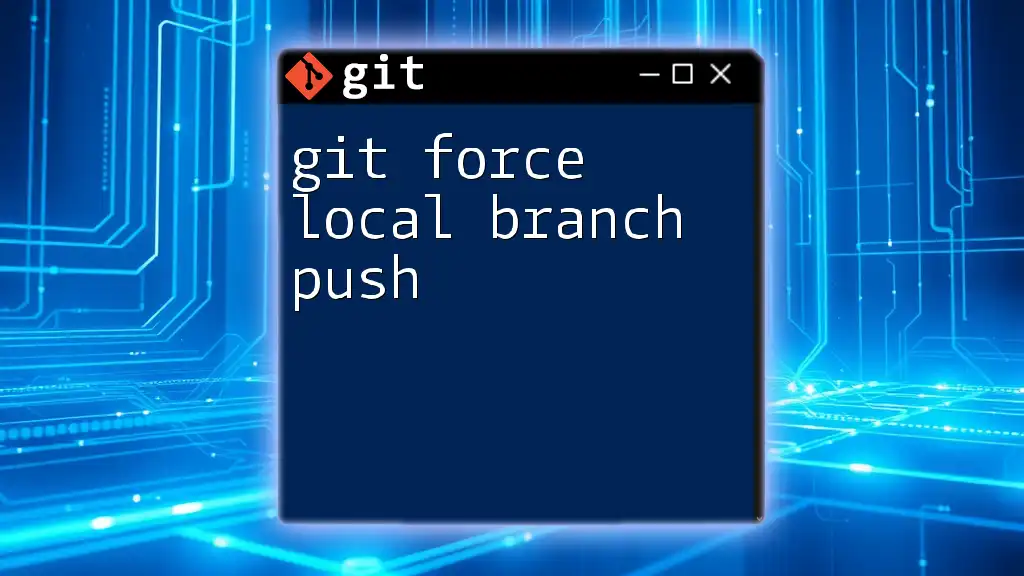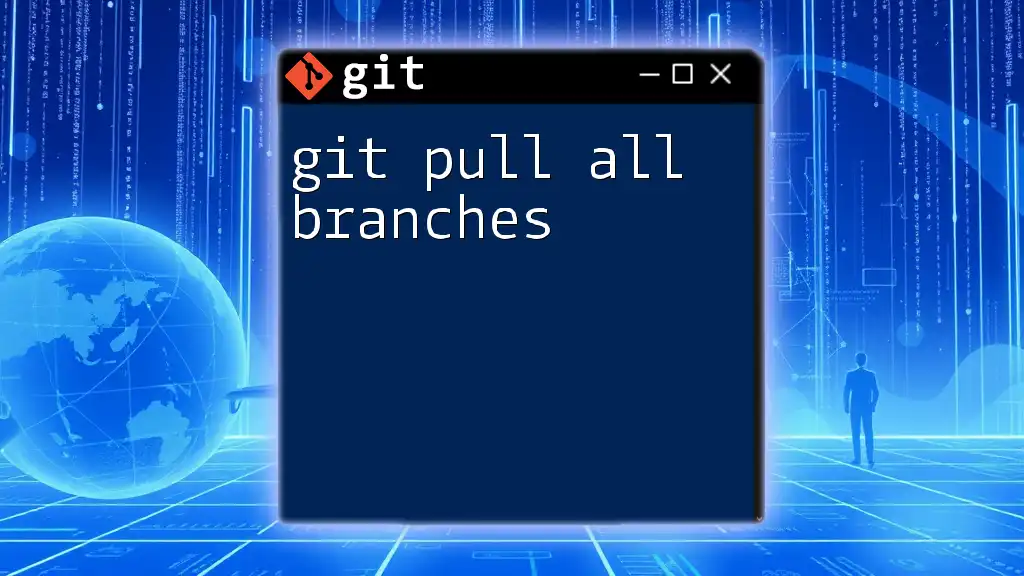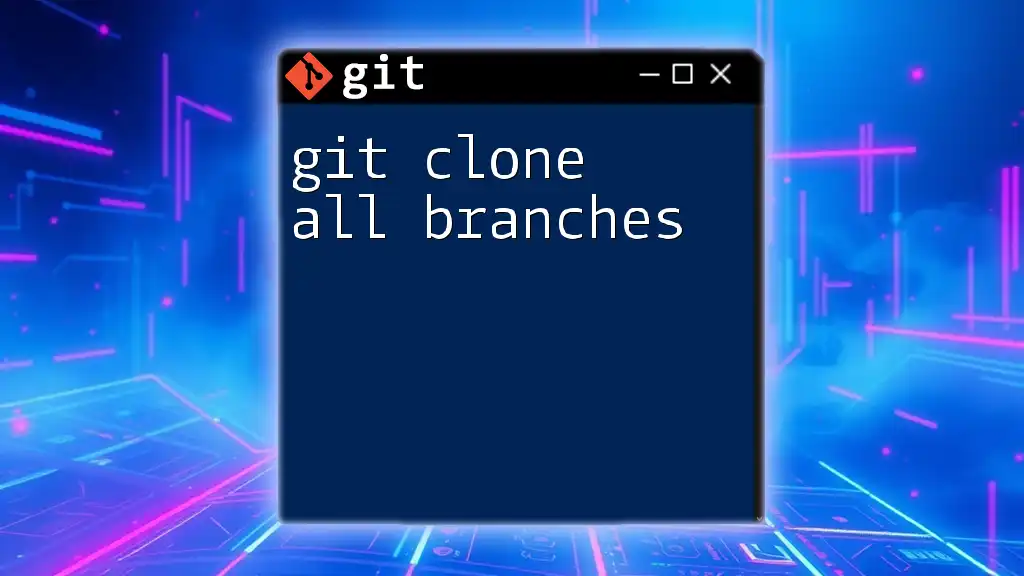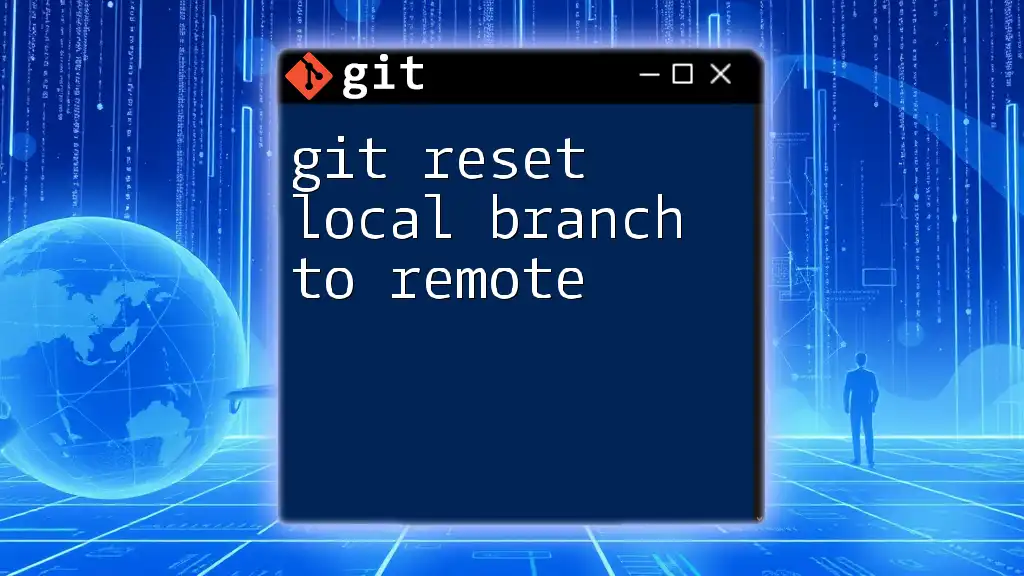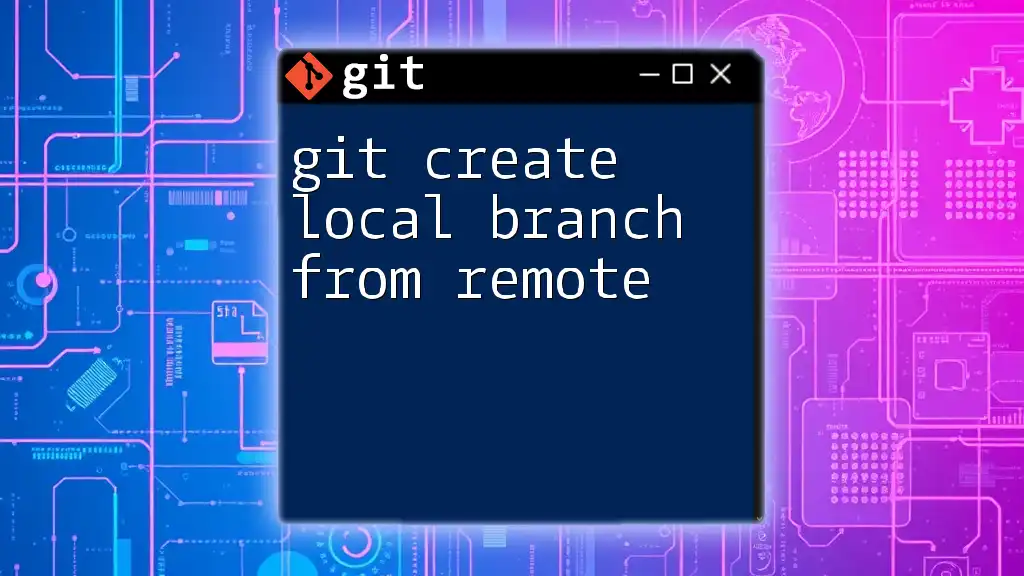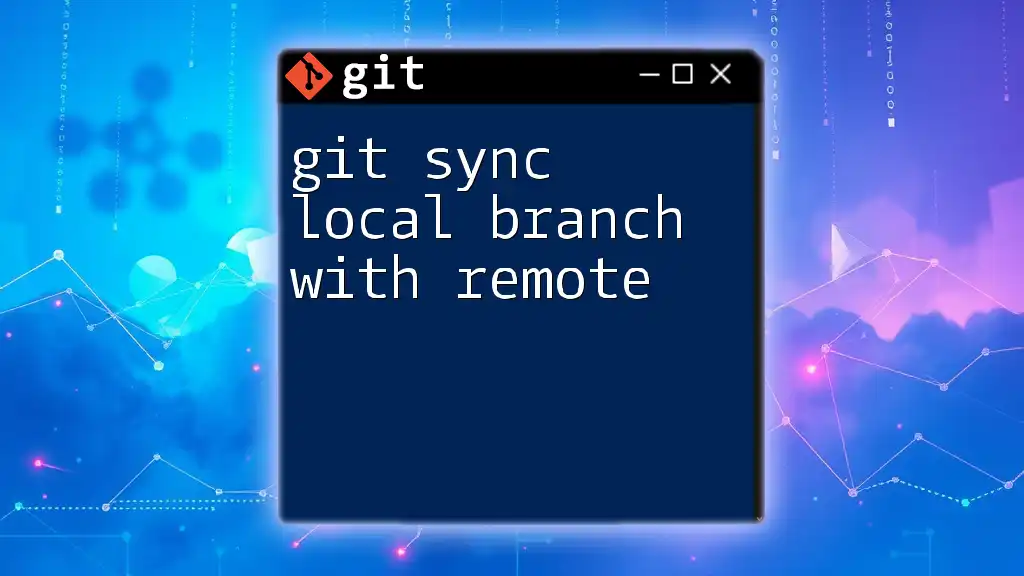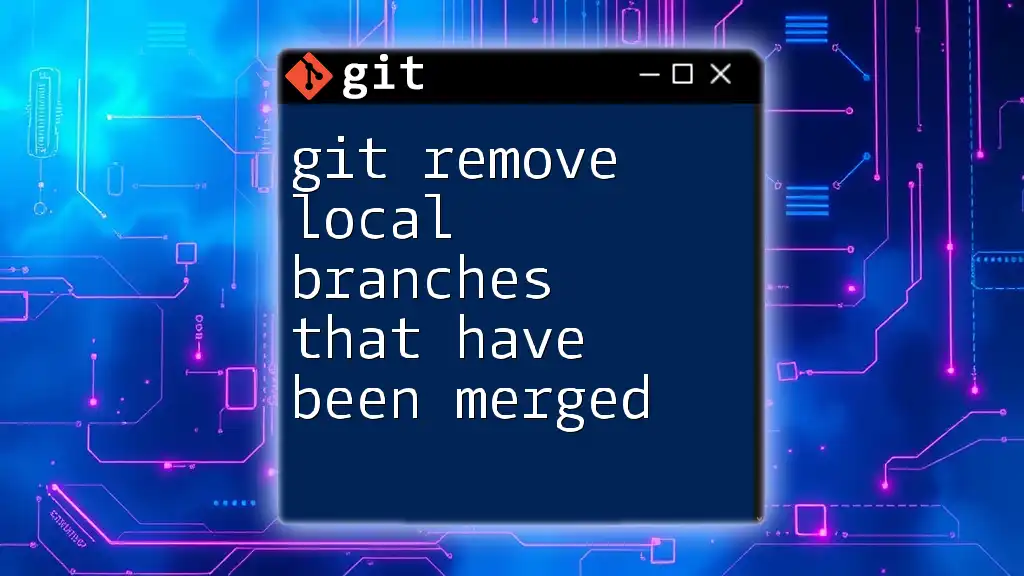`git prune` is a command used to clean up references to remote branches that have been deleted, effectively removing local branches that no longer have any commits associated with them.
To prune your local branches, you can use the following command:
git remote prune origin
Understanding Local Branches
What are Local Branches?
Local branches are essentially isolated environments where developers can work on specific features or fixes without affecting the main codebase. In Git, they allow for experimental changes and facilitate collaboration among team members without direct interference with others' work.
When to Create Local Branches
Creating local branches should be a regular part of your development workflow. They are especially useful for:
- Testing new features.
- Bug fixes.
- Experimentation outside of the main project. Overall, local branches are a practical way to ensure that the main branch remains stable while allowing for productivity and creativity.
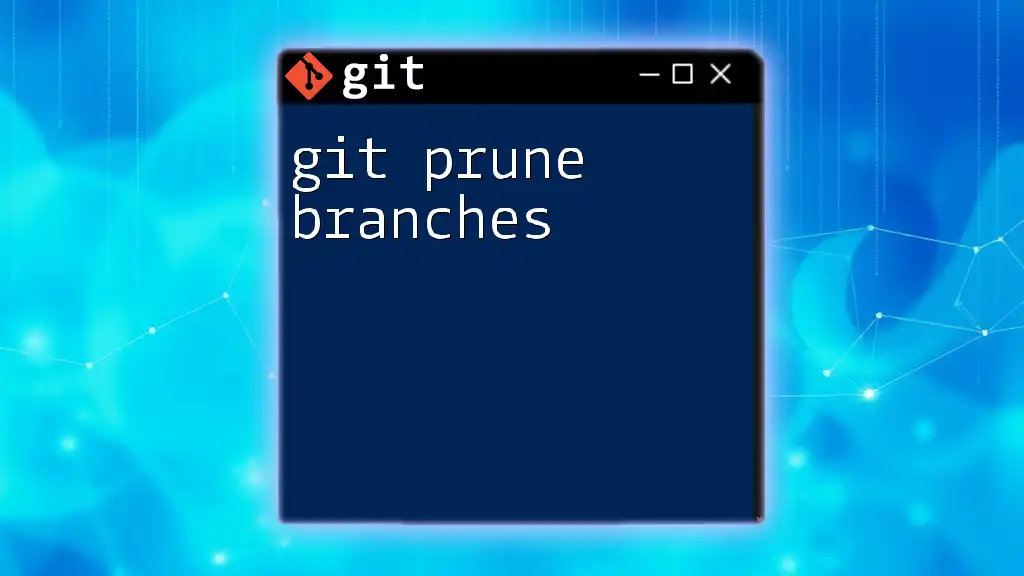
The Need for Pruning
What Does Pruning Mean?
In Git, pruning refers to the process of removing references to branches that no longer exist in the remote repository or are no longer needed locally. This is an essential maintenance task that keeps your workspace tidy.
Reasons to Prune Local Branches
-
Clutter Reduction
Over time, an unregulated number of local branches can become overwhelming. Pruning helps in reducing this clutter, allowing developers to focus on current, relevant code changes. -
Improved Performance
While the performance of Git commands isn’t usually affected by the number of branches, a cluttered local repository can slow down the mental process of understanding project history and current status. -
Maintaining Clean History
A clean Git history is crucial, especially when collaborating with others. Removing unneeded branches helps to establish a clear project timeline, making it easier to track contributions.
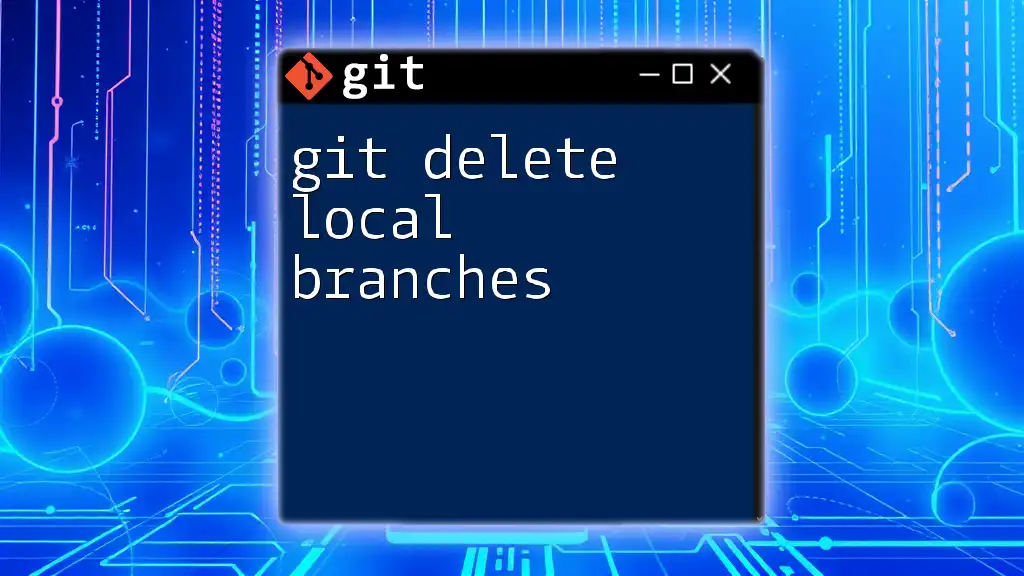
How to Prune Local Branches
Basic Git Prune Command
The `git prune` command is used to remove unreachable objects from the object database. However, it mainly focuses on the data stored in the Git database rather than branches themselves. For pruning local branches, we typically use other commands.
Identifying Unmerged Local Branches
Before pruning, it's critical to identify unmerged branches. To do this, you can use the following commands:
git branch --merged
This command lists all branches that have been merged into the current branch. In contrast, to find branches that have not been merged yet, you can use:
git branch --no-merged
By running these commands, you can make informed decisions about which branches to keep and which to prune.
Deleting Local Branches
Once you’ve identified the branches, you can remove them using the following commands:
To delete a merged branch, use:
git branch -d <branch-name>
For branches that you want to force-delete (unmerged branches), the command is:
git branch -D <branch-name>
Understanding the difference between safe deletion (`-d`) and forced deletion (`-D`) is essential. Always double-check that you no longer need the branch before using the force delete option to avoid losing valuable work.
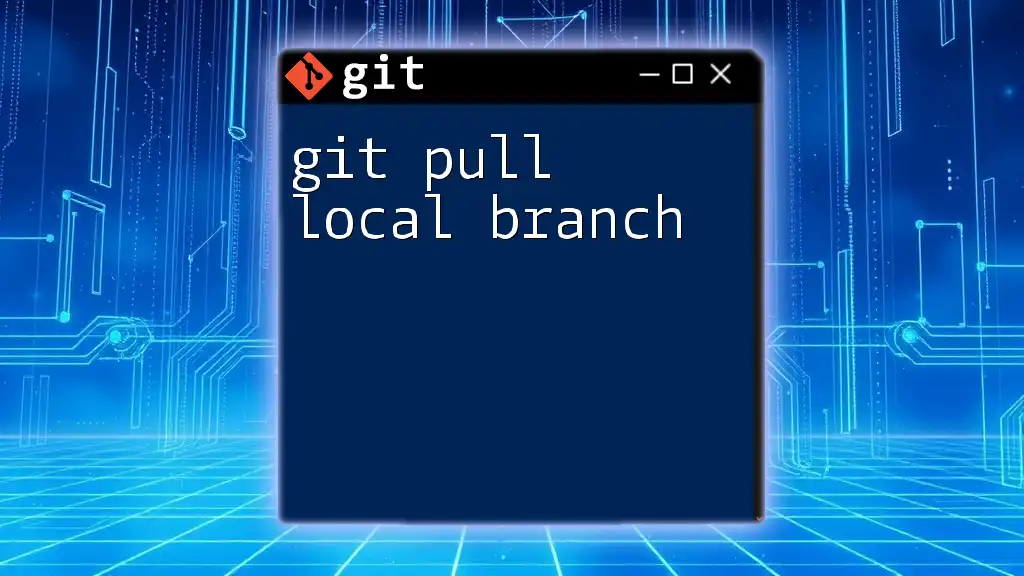
Automating the Pruning Process
Setting Up Pruning in Git Configurations
To streamline your workflow, you can enable automatic pruning when fetching updates from the remote repository. Run the following command:
git config --global fetch.prune true
With this setting enabled, every time you fetch from your remote, Git will automatically prune any branches that have been deleted on the remote, ensuring that your local repository stays tidy.
Creating Custom Git Aliases for Pruning
Another great way to simplify your workflow is to set up a Git alias for branch pruning. You can create an alias that compiles commands for quickly removing merged local branches:
git config --global alias.prune-local '!git branch --merged | grep -v "\\*" | xargs git branch -d'
This command effectively combines the branch listing and deletion, streamlining the task. Using aliases helps maintain consistency and saves time during cleanup.
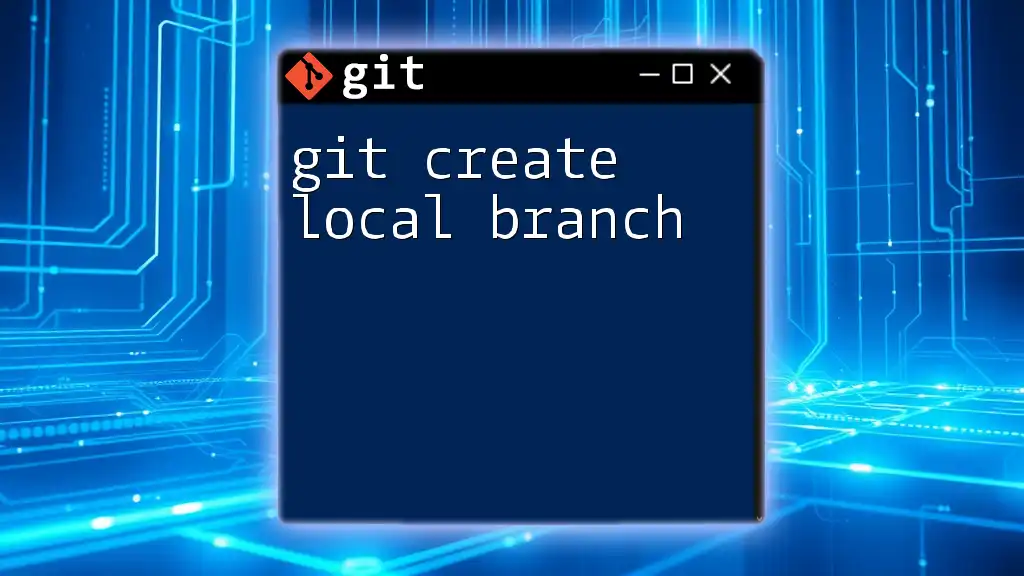
Best Practices for Pruning Local Branches
Regular Maintenance Routine
Establishing a regular schedule for pruning branches—be it weekly or monthly—helps prevent clutter from accumulating and keeps your repository organized.
Communication with Team Members
If you’re working in a collaborative environment, it’s essential to communicate with your team regarding branch statuses. Establish guidelines on when it’s appropriate to prune branches, ensuring no one’s critical work is inadvertently deleted.
Using Descriptive Branch Names
Using clear and descriptive names for your branches—such as `feature/user-authentication`—can make it easier to remember their purpose and relevance. This reduces the chance of sticking around with unnecessary branches and assists in identifying which branches can be deleted.
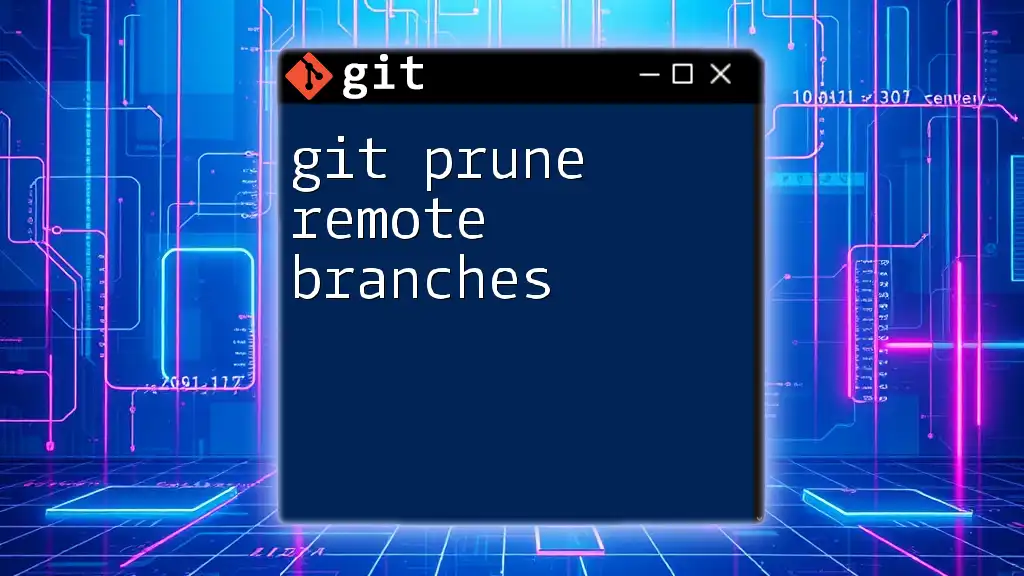
Common Mistakes to Avoid
Accidental Deletion of Important Branches
Be mindful when pruning. Accidental deletion can lead to lost work and frustration. Double-check which branches you are removing, and consider creating backups if necessary.
Not Keeping a Backup
While Git is a powerful tool, ensuring you have a backup of significant branches before pruning can never be understated. Whether you push branches to a remote repository or create a temporary backup, maintaining redundancy is a wise practice.
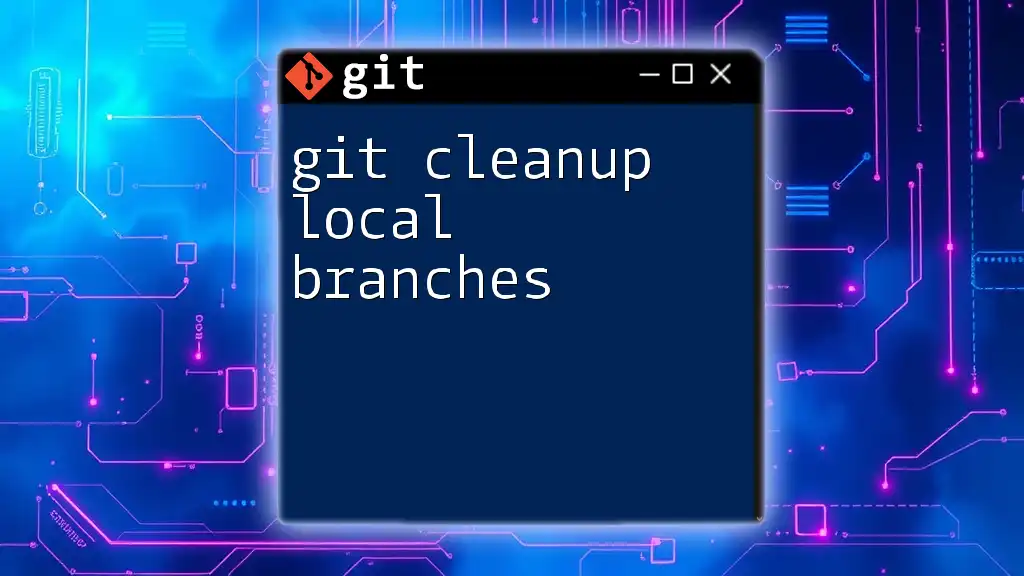
Conclusion
In summary, understanding git prune local branches is vital for maintaining a clean and efficient development environment. By regularly identifying unneeded branches, employing the appropriate commands, and establishing best practices, you can significantly improve your productivity. Pruning not only enhances your local workspace but also contributes to a more streamlined and collaborative development experience. Make branch management a priority, and your team efforts will yield far better results!

Additional Resources
For those eager to learn more about Git, consider referring to the official Git documentation, exploring further reading on Git workflows, or checking out tutorials and videos for more in-depth visual learning experiences.

